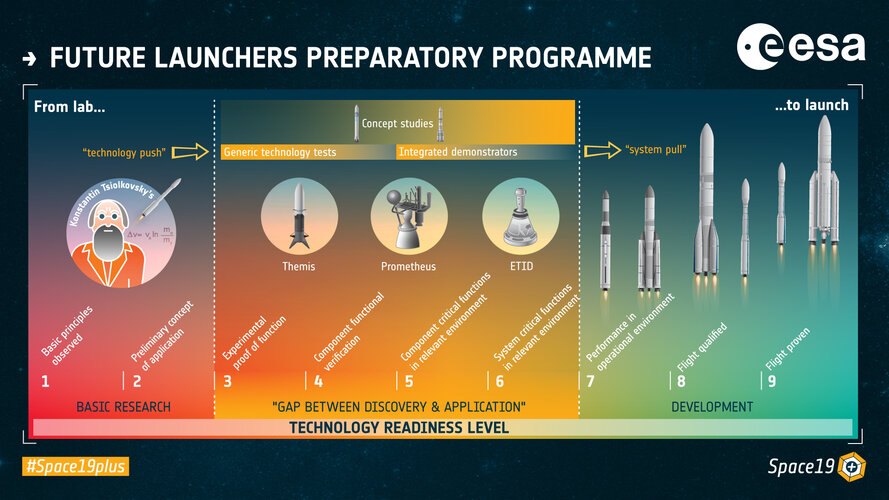Propulsion

Prometheus is Europe’s first ultra-low-cost reusable rocket engine demonstrator fuelled by liquid methane. It will benefit Europe’s new Ariane 6 launcher in the near-term and prepare for a new generation of European launch vehicles in the next decade.
This is a 1000 kN class engine; further development will soon bring this up to 1200 kN. It is highly versatile and reignitable, making it suitable for use on core, booster and upper stages, reusable or not. It aims to slash costs through an extreme design-to-cost approach, new propellant and innovative manufacturing technologies.
Additive layer-by-layer manufacturing of Prometheus enables faster production, with fewer parts. Liquid oxygen–methane propellants are highly efficient and widely available and therefore a good candidate for a reusable engine.
A full-scale demonstrator will be fired in France at the end of 2021 to de-risk the Prometheus first test campaign at the DLR German Aerospace Center in Lampoldshausen, Germany, expected in 2022. Prometheus will be used on Themis (a reusable first stage demonstrator developed within FLPP) as part of an incremental inflight demonstration of reusability first in Kiruna, Sweden in 2023, and then in Kourou, French Giuana in 2025.
A Prometheus concept based on liquid hydrogen fuel is also in development to provide an alternative to methane and could be available for use on Ariane 6 as early as 2025.
ETID, an Expander-cycle Technology Integrated Demonstrator, paves the way for the next generation of cryogenic upper stage engines in Europe in the 10-tonne class.
Testing of a full-scale ETID demonstrator proved the latest propulsion technologies. The test results were fully analysed including cross-checks to improve numerical models as well as the full inspection of the tested hardware.
Synergy between the Prometheus and ETID projects has yielded game-changing additive manufacturing techniques for combustion chambers that reduce cost and lead time.
Berta, a 5kN-thrust class, 3D-printed full-scale engine demonstrator for upper stages has performed tests at DLR Lampholdshausen. It uses ‘storable propellants’, called such because they can be stored as liquids at room temperature. Rocket engines that are powered this way are easy to ignite reliably and repeatedly on missions lasting many months.
Continuing on from this project and considering the environmental impact of the currently used storable propellants, investigations are ongoing to prepare tests with identified new environmentally friendly propellant combinations that remain storable but are much less toxic.
Further hybrid propulsion demonstrations are on-going following the launch of the Nucleus sounding rocket in Norway, which successfully reached space by attaining a final altitude of over 100km. Watch the full videos here.



